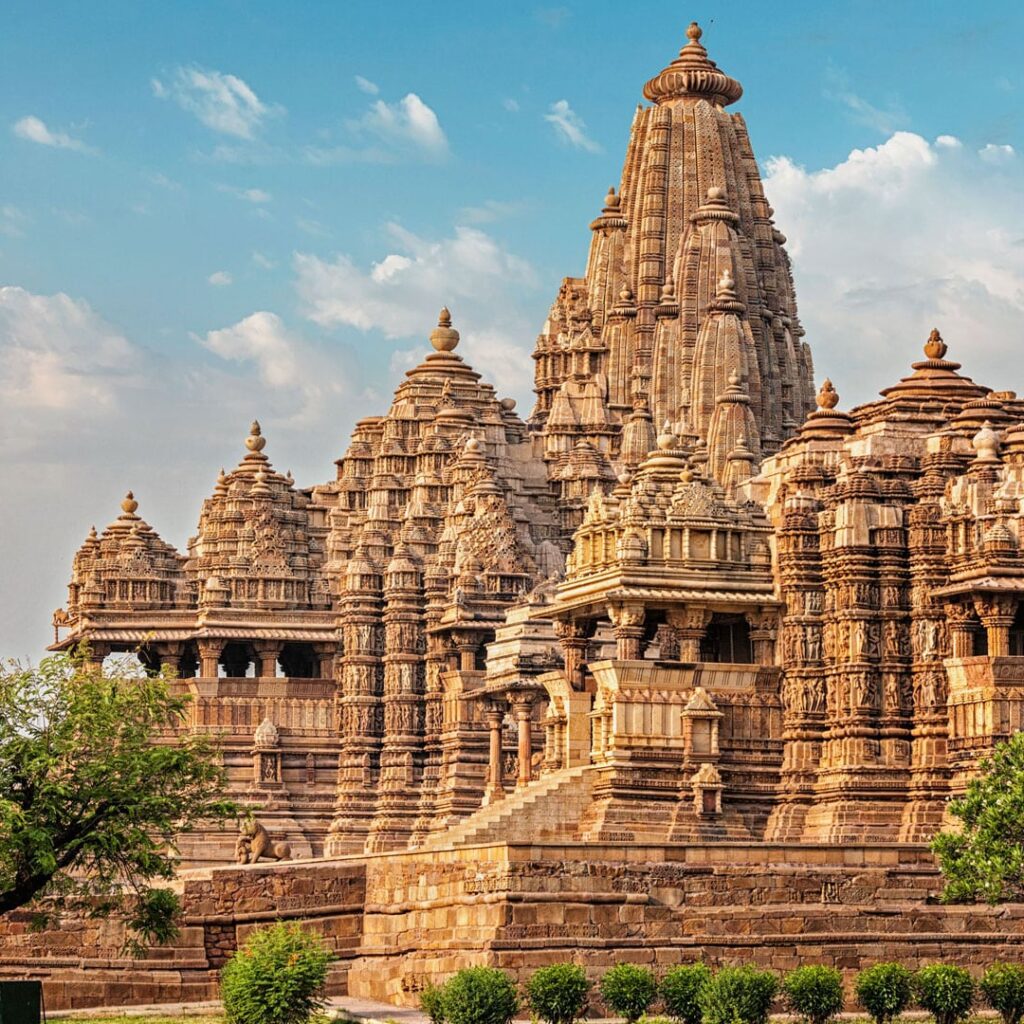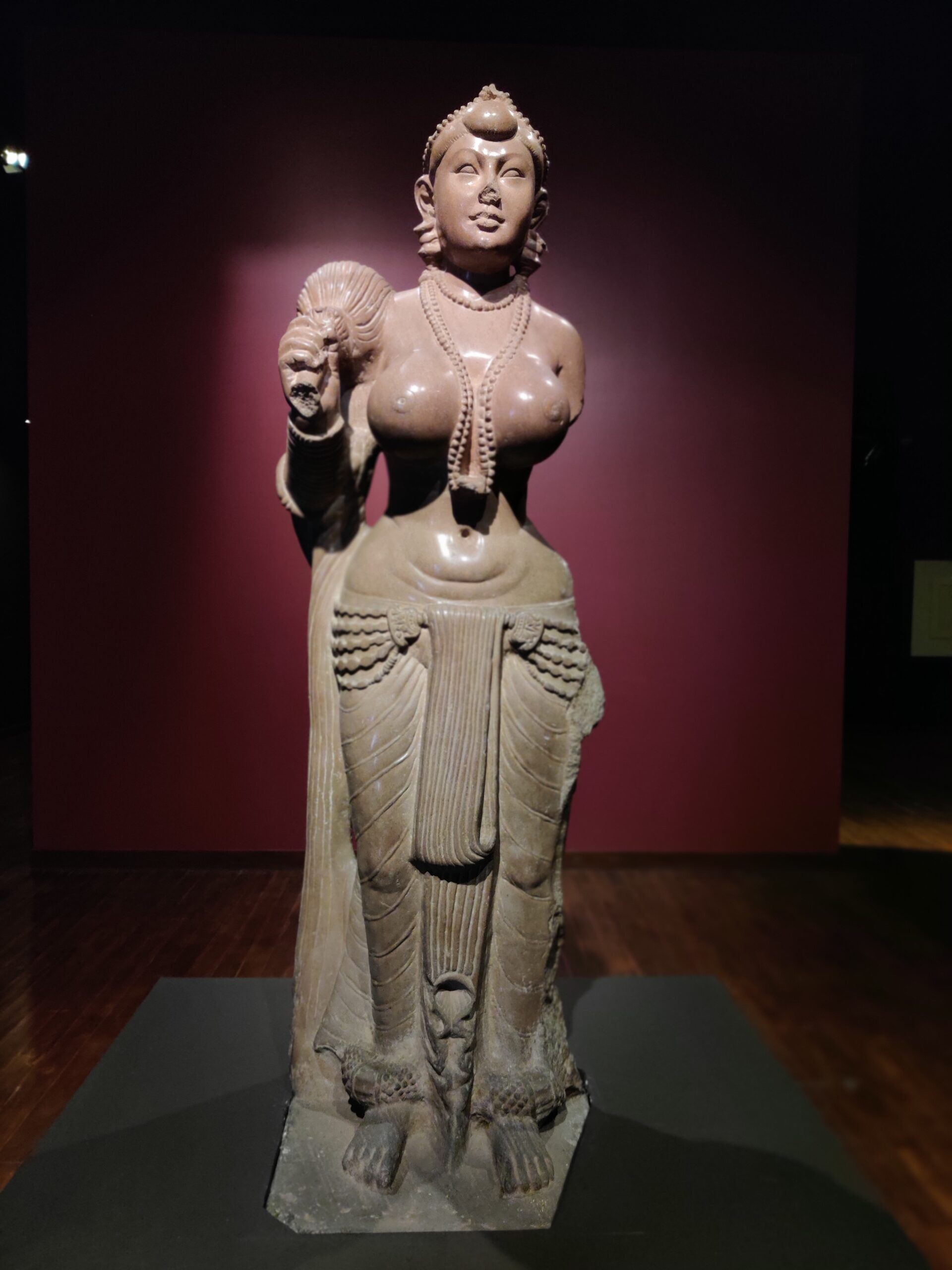
Nearly everyone who visits India or south India in particular return with an impression that is a land of temples. South India is dotted with a great number of temples many of them are ancient and have become places of pilgrimage. Apart from the cities a good number of towns or village have two or more temples of each. The temples believed to be the home of gods are spots of admiration. through the temple men try to give their religious beliefs a visual form to satisfy their sense of understanding. As a result, the temples tend to become aesthetic description of all religious symbols associated with it.
Indian sculpture was mainly meant for temple ornamentation in the ancient and medieval period. it was the gradual evolution starting from the rock cut cave temples to huge Rathas which finally led to the large scale temples.it all began with the Gupta age (4th -6th) though we have found evidences of such shrines before that also. by the advent of 8th century this temple building took off all over India. Pallas in the east cholas and Pallava in the south rashtrakutas and Chandelles in the central India built temple of various architectural styles from 8th to 10th century. after this temple were built in Vijayanagar. Mysore, Rajasthan, Bengal and Orissa till 12th c. A.D. in short, the great era of temple building started at about 500 AD and reached its climax in the great temple in Madurai (Meenakshi temple) and Rameswaram temple for instance in 1600 AD.
The building art which developed in India during early centuries of Christian era developed more or less independently in the west south and north of the subcontinent. but the basic impression for all of them was the saying and the principles on which heir construction was based were derived from a common text the Vaastu shastra.
CLASSIFICATION
Indian temples could be classified into 2 broad orders as (A) Nagara (in north India) (B) Dravid (in south India)
TEMPLE SCULPTURES -ICONOGRAPHY
Iconography means the symbolic representation attached to an image or images. in this case it is of gods, mythical beings related to them.in temples their place and existence is very significant in terms of social political or regional context.
Temples comprise of elaborate sculptures and ornaments that are carefully planned at their very beginning. for instance, river goddesses (ganga and Yamuna) are found at the entrances in a nagara temple, Dwarapalas are usually found on the gateway or gopurams of Dravid temple similarly maithuna’s (erotic images), Navagraha’s (the 9 auspicious planets) and yakshas are also placed at the entrance as guards. various for) face mass of the main divinity is made on the outer walls of the chamber. the Ashtadikpalas (deities of direction) face 8 key of direction on the outer wall of the main chamber and or on the outer walls of the chamber. secondary shrines around the main temple are devoted to the family of incarnations of the main god. various mythical creatures like yalis gavaksh motifs are carved at the front wall and interior walls to complete the architecture.
Exploring Divine Manifestations
Hindu temple sculpture and bronze art are integral components of Indian artistic heritage. These art forms have played a significant role in depicting the divine manifestations of Hindu deities and showcasing the intricate craftsmanship of skilled artisans. In this article, we will delve into the world of Hindu temple sculpture and bronze art, exploring their historical significance, artistic features, and their contribution to the cultural landscape of India.
Historical Significance:
Hindu temple sculpture and bronze art have a rich history that dates back to ancient times. The tradition of temple sculpture originated with the construction of rock-cut caves and structural temples, where intricate stone carvings adorned the walls, pillars, and doorways. Bronze art flourished during the Chola period in South India, where bronze images of deities were cast using the lost-wax technique.
Artistic Features:
- Iconography: Hindu temple sculptures and bronze art meticulously adhere to the principles of iconography, which prescribe specific forms, postures, and attributes for each deity. The sculptures depict various gods and goddesses, including Brahma, Vishnu, Shiva, Lakshmi, Durga, and many others, each with their unique symbolism and characteristics.
- Mudras and Postures: The sculptures often portray deities in specific poses, known as mudras, which hold symbolic significance. Common mudras include Abhaya Mudra (fearlessness), Varada Mudra (blessing), and Dhyana Mudra (meditation). Postures, such as standing (sthanaka), sitting (asana), and dancing (nritya), convey different aspects of divinity and narratives.
- Ornate Detailing: Hindu temple sculptures and bronze art are known for their intricate detailing and ornamentation. The artists skillfully render elaborate jewelry, headdresses, clothing, and accessories on the deities, showcasing a high level of craftsmanship. Every aspect of the sculpture is carefully crafted to create a sense of divine beauty and grace.
- Expressions and Emotions: The sculptures masterfully capture a range of expressions and emotions, reflecting the stories and myths associated with the deities. Serenity, compassion, joy, and power are conveyed through the facial expressions and body language of the sculptures, evoking a spiritual connection with the divine.
Contribution to Indian Culture:
- Devotional Practices: Hindu temple sculptures serve as objects of devotion and are integral to the worship rituals performed in temples. The intricate craftsmanship and divine beauty of these sculptures inspire deep reverence and provide a focal point for devotees to express their devotion and seek spiritual solace.
- Architectural Integration: Hindu temple sculptures are not limited to standalone artworks but are integrated into the architecture of temples. They adorn the walls, pillars, and entrances, enhancing the overall aesthetic appeal and creating a sacred atmosphere within the temple complex.
- Cultural Identity: Hindu temple sculpture and bronze art are significant contributors to the cultural identity of India. They reflect the religious beliefs, mythologies, and philosophical concepts of Hinduism, acting as visual representations of the rich cultural heritage of the country.
Notable Examples:
- Brihadeeswarar Temple, Thanjavur: The temple is renowned for its towering gopuram (gateway tower) and intricately carved sculptures that depict various deities, celestial beings, and mythological narratives.
- Khajuraho Temples, Madhya Pradesh: These UNESCO World Heritage sites are famous for their exquisite temple sculptures, which showcase intricate details, sensuousness, and a fusion of spiritual and earthly themes.
- Nataraja Statue, Chidambaram: The bronze statue of Nataraja, the cosmic dancer, is a masterpiece of Chola bronze art, symbolizing the eternal cycle of creation and destruction.
Conclusion:
Hindu temple sculpture and bronze art exemplify the artistic excellence and spiritual devotion of ancient and medieval India. These art forms have not only contributed to the visual aesthetics of temples but have also become an intrinsic part of the cultural and religious fabric of the country. The sculptures and bronze images serve as a visual medium for devotees to connect with the divine and continue to inspire awe and admiration for their exquisite craftsmanship and timeless beauty.
